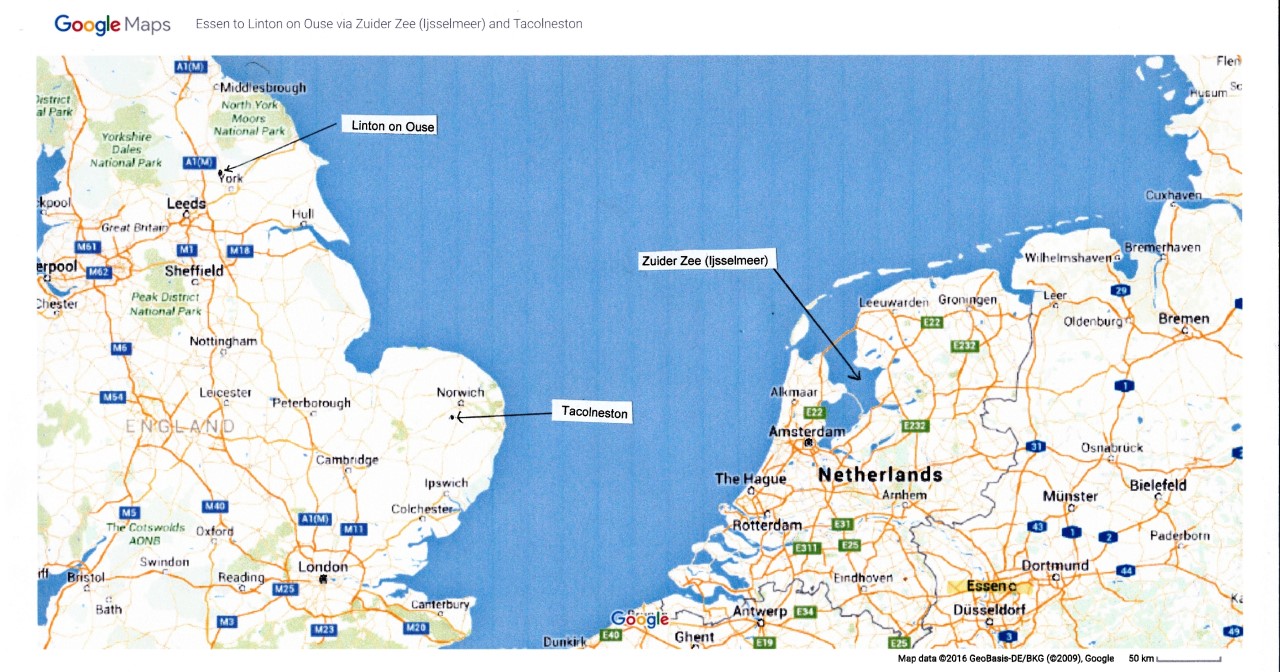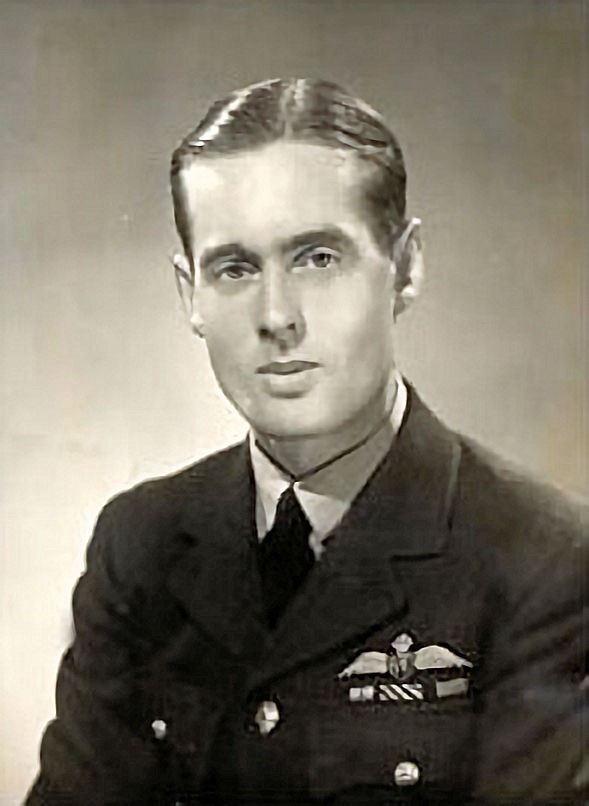
The History of Our Village Through Time
Reproduced from Norfolk Tales and Myths!, who are the copyright holders.
Norfolk Tales and Myths! Facebook page
For those who don't have Facebook, the content is reproduced below.
THE PREVIOUSLY UNTOLD STORY OF HALIFAX BOMBER, L9524
Written by Haydn Brown
The night in question was on Friday 10 October 1941:
The sleeping residents of Tacolneston, South Norfolk, were unaware that a small piece history was being written, both in the skies above and down to the fields surrounding the village.
That same night five Halifax bombers of 35 Squadron took off from RAF Linton on Ouse in Yorkshire to deliver an attack on Krupps’ Armament Works at Essen. Three planes managed to drop their bombs on or about the target area despite bad visibility. Of the other two, one had to abandon the task and return to base. The flight engineer of the remaining Halifax was Sgt Dennis Hunt who wrote about the event in his memoirs.
One of the engines caused problems from the beginning as it stuck on rich mixture, emitting long exhaust flames visible to German night fighters and using large quantities of precious fuel.
Dennis writes:
“Anti-aircraft fire was particularly heavy over the Ruhr that night and we took a lot of shrapnel damage. After our bombing run, we found that we could not close the bomb
doors and concluded that our hydraulic mechanism in the bomb bay had sustained some damage ……... and it was doubtful we had enough fuel to get us home.”
Aiming for the English coast they suddenly found themselves flying over a large bay which the navigator decided was the Wash. They made a distress call and runway lights below switched on. Circling to land Dennis released the undercarriage lock in preparation and suddenly one of the wheels dropped and stuck in the down position. After this first shock the pilot spotted a bridge and realised they were flying over the Zuider Zee and aiming for an enemy airfield.
It is hardly surprising that Dennis continues:
“We were now in an awful dilemma; with bomb doors open and undercarriage down the aircraft was just wallowing along. We were already down to 3000 feet and could not climb
away, furthermore we were so low on fuel that it was touch and go whether we could reach the English coast. As we set course for the nearest spot in England the airfield lights
went out and we flew through a barrage of enemy gunfire. Miraculously we were not hit directly but we did take a lot of flak fragments.”
On captain’s orders Dennis crawled under seats in mid fuselage to change the fuel tank levers as soon as he heard an engine start to cut, all the time the plane losing height as it headed towards the Norfolk coast. Wireless contact was lost so the pilot had neither means of communication nor any accurate indication of their location. It was a misty morning and they were relying on finding a landing location suitable for the Halifax.
Landing in Tacolneston Friday 11thOctober 1941:
The crew were ordered to adopt crash positions, which meant sitting on the floor in the fuselage with backs against some solid support. They felt the initial bump as the aircraft struck the ground but then were flung about as it careered on over very uneven ground and were waiting for the final crash as they hit a tree – but the crash never came. After much banging and bumping the plane slowed and came to a stop. Dennis opened the rear hatch, looked out and reports “what did I see – cabbages!”
A policeman on a bicycle, the local farmer and a growing crowd of villagers started to appear, despite the early hour. The farmer was Walter Spratt who lived at St Mary’s farm, Tacolneston, bringing a welcome bottle of brandy but not so pleased about the amount of damage done to his fields, crops and hedges.
Eyewitnesses and the arrival of Leonard Cheshire:
Biographies of Leonard Cheshire by Andrew Boyle and Richard Morris refer to the incident without identifying an exact location or date. Ministry of Defence records cite the landing of L9524 at Long Stratton. Thanks to Dennis and eye witnesses we now know it was Tacolneston Great Field that briefly played host to the World War Two bomber legend, pilot in the ‘Dambusters’ 617 Squadron and later a significant philanthropist, now known widely as the founder of Leonard Cheshire Disability.
Dennis Hunt - died 2011:
Eventually promoted to Flight Lieutenant, Dennis Hunt left the RAF in Feb 1946. He wrote his memoirs mainly from memory from 1997/1998 until 2000 or 2001 when he was 80/81 years old. Dennis Hunt died in Derby on 11th July 2011, aged 91. He had other hair-raising adventures with Leonard Cheshire but never revisited Tacolneston Great Field. Until the Norfolk chapter of his memoirs came to light this event, although recorded on various RAF official forms, had never previously been investigated.
Acknowledgements and thanks:
Dennis was the father of my friend Denise and, after her death, her husband Chris found his memoirs and asked me to locate the Norfolk landing. Thank you, Chris. Thanks
also to the EDP library and letters page for helping me identify those I have been privileged to talk to who remember the day over 75 years ago. A very special thanks to those
I cannot thank in person: the crew of Halifax L9524 (V) No. 35 Squadron October 10/11 1941.
By Anne Wells.
(The full copy of her article ‘Cheshire’s 1941 Norfolk rescue: the untold story of Halifax bomber L9524’ is available in the Norfolk Record Office reference library.)
Images:
1. Halifax and crew. A later photograph than the event described, c. December 1941. Three of the crewmen pictured were part of the crew landing in Tacolneston Great Field.
Sgt Dennis Hunt is second from right, Sgt Henry the navigator is on the far left and Sgt Lowe, the tail gunner, is thought to be the man third from left.
2. North Sea showing takeoff, target and landing locations.
3. Wing Commander Leonard Cheshire in January 1943



We make every effort to document our research. If you have something you would like to add, please contact us.